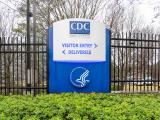Apr 23, 2012
Congressman questions NSABB decision reversal process
A congressman who recently questioned the Obama administration about its safeguards related to dual-use research today posed a fresh round of questions for the National Institutes of Health (NIH) about its actions related to two studies describing mammalian-transmissible H5N1 viruses. The questions from Rep Jim Sensenbrenner, R-Wis., come in the wake of recent criticism from a National Science Advisory Board for Biosecurity (NSABB) member over the NIH's handling of an NSABB meeting in March. Sensenbrenner, vice chairman of the House Committee on Science, Space, and Technology, detailed his concerns in a letter today to NIH Director Francis Collins, MD, PhD. In December the NSABB recommended withholding details of the two H5N1 studies, but in late March the board reconvened and voted for full publication of both papers. After that meeting, NSABB member Michael T. Osterholm, PhD, director of the University of Minnesota's Center for Infectious Disease Research and Policy, publisher of CIDRAP News, wrote a letter to NIH officials charging that the meeting agenda was designed to induce the board to reverse its original recommendation. A leaked copy of the letter appeared Apr 13 in ScienceInsider. Sensenbrenner, in his letter to the NIH, said that if Osterholm's allegations are true, the NSABB's actions do little to prepare the government to better handle similar issues that arise in the future with dual-use research. He asked Collins to explain why the NIH asked the NSABB to reconsider its earlier recommendation, what was done to ensure briefings by "disinterested subject matter experts," what steps it is taking to investigate the bias allegations, which federal agencies and officials participated in the process to revise the dual-use research oversight policy, and what mechanisms the NIH has in place to comply with the new policy. Sensenbrenner, who asked Collins to respond by May 18, had previously said the new policy was a step in the right direction, but that he would closely watch new developments.
Apr 23 Rep Sensenbrenner press release
Apr 20 CIDRAP News story
Antiviral maker Biota merges, announces move to US
Australian flu drug maker Biota is moving to the United States and merging with a US company because it believes American investors will better understand the company's value, the Australian Associated Press (AAP) reported today. Biota, developer of the antiviral Relenza (zanamivir), will merge with Nabi Pharmaceuticals to form Biota Pharmaceuticals, with headquarters in Rockville, Md. Biota Chairman Jim Fox said Australian investors have not appeared to fully appreciate the value of last year's $231 million contract the company received from the US Biomedical Advanced Research and Development Authority (BARDA) for further development of the antiviral laninamivir, according to the AAP. "We believe the US market will appreciate what we've got and better reflect the value of our assets than staying in Australia, he said." Biota and Japan's Daiichi Sankyo co-own some second-generation flu drugs, including laninamivir, which is sold in Japan as Inavir.
Apr 23 AAP story
Apr 23 Biota merger agreement
ACP takes stand supporting public health infrastructure
The American College of Physicians (ACP), an organization representing 132,000 internists, recently unveiled a policy paper that calls for improvements in the nation's public health infrastructure to respond to acute and chronic threats. The paper calls for adequate funding, recognizing the difficult budget environment, according to an Apr 20 press release. It suggests placing funding priority on the programs that have demonstrated effectiveness in reaching key public health objectives. ACP President Virginia Hood, MBBS, MPH, said in the statement, "We need better coordination and less fragmentation of public health agencies, which could achieve savings by eliminating duplication and costs associated with inefficient sharing of information and resources." The paper contains seven policy positions that address ensuring assessment of and response to public health needs, ongoing assessment of program objectives, workforce training, primary-case-based health delivery models, drug and vaccine shortages, programs to counter vaccination misinformation, and boosting the health informatics infrastructure.
Apr 20 ACP press release
Researchers pinpoint key MRSA gene
US and Chinese researchers have identified a rapidly emerging Staphylococcus aureus gene, sasX, that plays a key role in establishing methicillin-resistant S aureus (MRSA) epidemics in most of Asia. The team analyzed 807 patient samples of invasive S aureus from three Chinese hospitals over the past decade. They found that sasX is more prevalent in Chinese MRSA than expected; from 2003 to 2011, the percentage of MRSA samples exhibiting the gene rose from 21% to 39%, according to a letter in Nature Medicine. Their finding suggests that the sasX gene is involved in molecular processes that help MRSA spread and cause disease and may be a target for new drugs, according to a news release from the US National Institutes of Health (NIH).
Apr 22 NIH news release
Apr 22 Nature Med letter
In related news, a separate team of Chinese investigators found that levels of MRSA and methicillin-resistant coagulase-negative staphylococci (MRSCoN) remained level in China but that the prevalence of vancomycin-resistant enterococci (VRE), while low, has increased in recent years. As detailed in Diagnostic Microbiology and Infectious Disease, they studied 5,608 clinical isolates of Gram-positive bacteria collected from 12 Chinese hospitals from 2005 through 2010. They found MRSA levels of 46.8% and MRSCoN levels of 81.5%, both of which changed little during the study period. However, VRE prevalence rose from 0 in 2005 to 4.9% in 2010.
Apr 21 Diagn Microbiol Infect Dis abstract




















